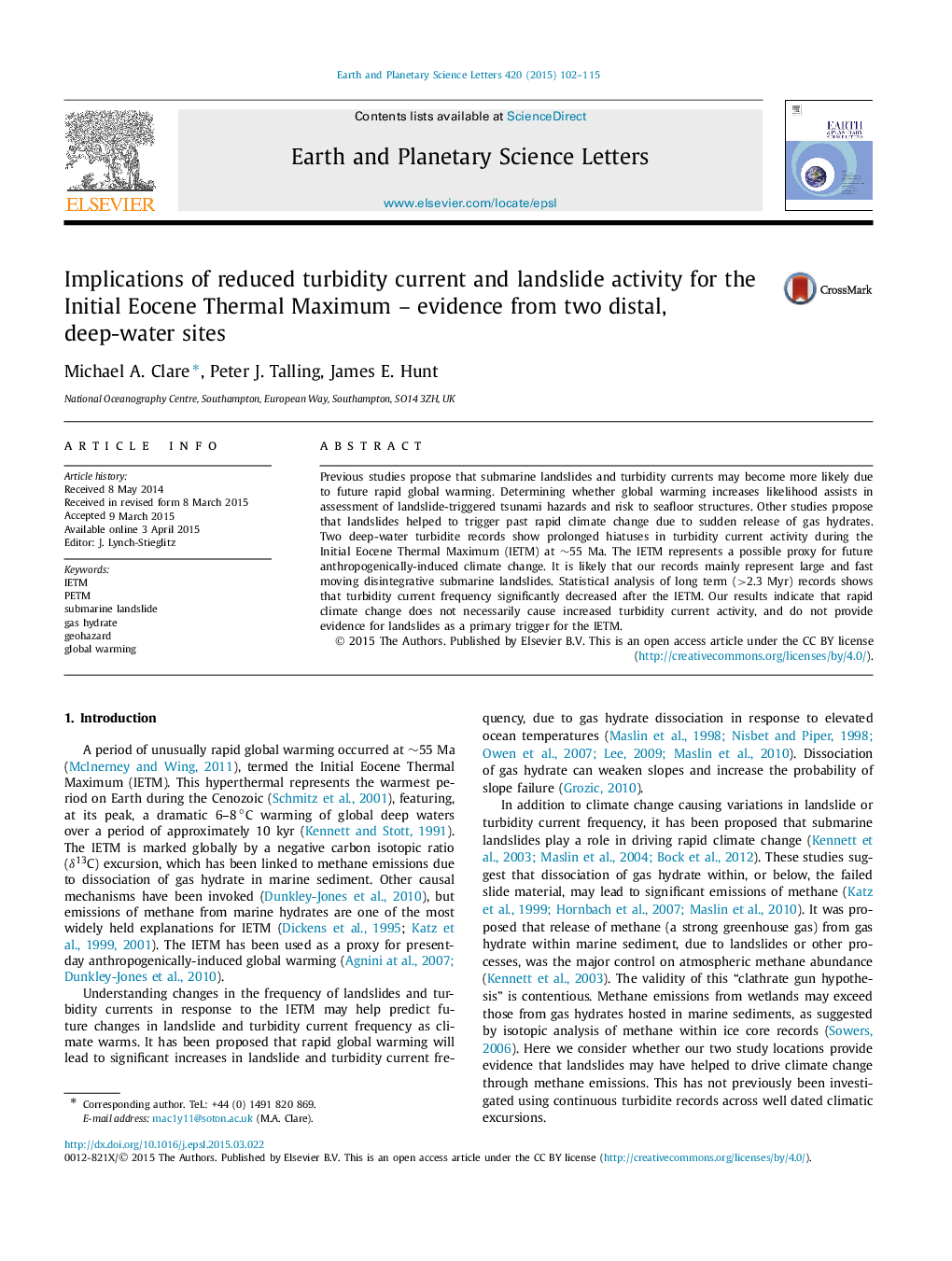| کد مقاله | کد نشریه | سال انتشار | مقاله انگلیسی | نسخه تمام متن |
|---|---|---|---|---|
| 6428162 | 1634736 | 2015 | 14 صفحه PDF | دانلود رایگان |
- Rapid global warming may not increase submarine landslide likelihood.
- Turbidity current frequency decreased post-Initial Eocene Thermal Maximum.
- Submarine landslides are not implicated as a primary trigger for the IETM.
Previous studies propose that submarine landslides and turbidity currents may become more likely due to future rapid global warming. Determining whether global warming increases likelihood assists in assessment of landslide-triggered tsunami hazards and risk to seafloor structures. Other studies propose that landslides helped to trigger past rapid climate change due to sudden release of gas hydrates. Two deep-water turbidite records show prolonged hiatuses in turbidity current activity during the Initial Eocene Thermal Maximum (IETM) at â¼55 Ma. The IETM represents a possible proxy for future anthropogenically-induced climate change. It is likely that our records mainly represent large and fast moving disintegrative submarine landslides. Statistical analysis of long term (>2.3 Myr) records shows that turbidity current frequency significantly decreased after the IETM. Our results indicate that rapid climate change does not necessarily cause increased turbidity current activity, and do not provide evidence for landslides as a primary trigger for the IETM.
Journal: Earth and Planetary Science Letters - Volume 420, 15 June 2015, Pages 102-115
